Wine lists—even the less lengthy ones—can be intimidating. From a crisp, bright sauvignon blanc to a bold, savory cabernet, possibilities abound when it comes to uncorking a bottle with your meal. But finding the perfect sip doesn’t have to be overwhelming: Dishes offered at restaurants around Laguna Beach can serve as touchstones for a broader understanding of combining vino and cuisine. Here, certified sommeliers use these familiar flavors to let us in on the secrets to choosing varietals that will prepare your mouth for a flawless pairing, so you can re-create it over and over again.
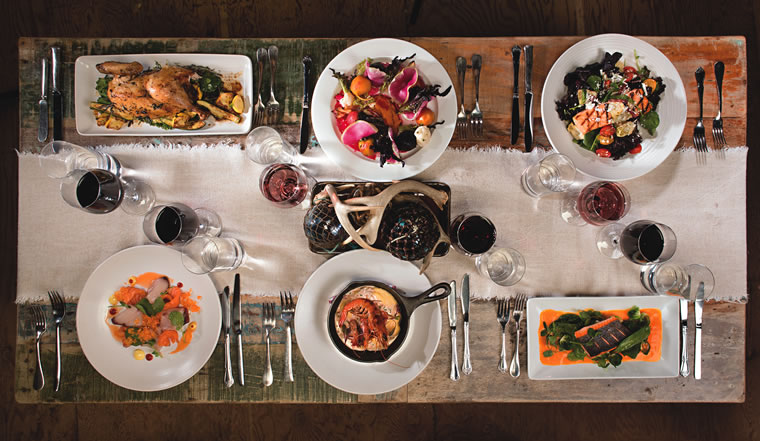
Riveting Reds
While pairing food and wine is not an exact science, there are several elements that can be matched for a transcendent dining experience. In wine, consider body, fruit, acid, sweetness and tannin (a bitter, astringent substance); these fundamental characteristics pair with culinary profiles such as salt, sugar and fat to create complementary flavors and textures.
Every wine varietal has distinctive fruit notes, for example, that can be paired with similar flavors in a dish to augment the overall taste. Executive Chef Camron Woods’ Harvest restaurant dinner menu coming soon at The Ranch will include homemade fennel seed and pork sausage with tagliatelle pasta, golden tomato-pepper bouillon and homegrown basil; Jesse Rodriguez, who will serve as a consultant for the hotel’s new beverage program, recommends sangiovese, a highly acidic red wine, with the dish.
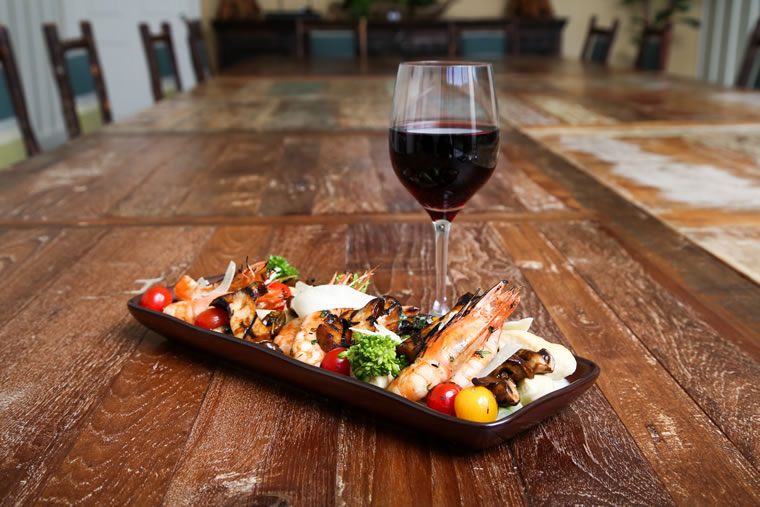
“Typically, what you get out of that grape varietal is a bit more of a tomato quality to it—tomato leaf depending on the style and producer,” he explains. The wine echoes the flavor and acidity of the bouillon, and can also be a match for other tomato-based sauces, like marinara.
A wine’s flavor, however, can differ based on its origins, as climate affects taste, and characteristics vary according to producer. When determining a pairing, locale can provide a narrower sense of direction: A dish that features chorizo, for example, lends itself to Spanish reds such as tempranillo or garnacha.
Jesse employs this approach when pairing with Harvest’s sauteed new Caledonian prawns with gnocchi, wild mushrooms, organic broccolini and truffle Parmesan broth. “When I think about truffles and … mushrooms, I always think about the wines that come from Chianti, [Italy],” he says, before suggesting two varietals centered on the region of Alba, “home of the best truffles.” A glass of nebbiolo will draw on the earth tones in the mushrooms and broccolini, while dolcetto has a fruitier, plush quality for a softer tone.
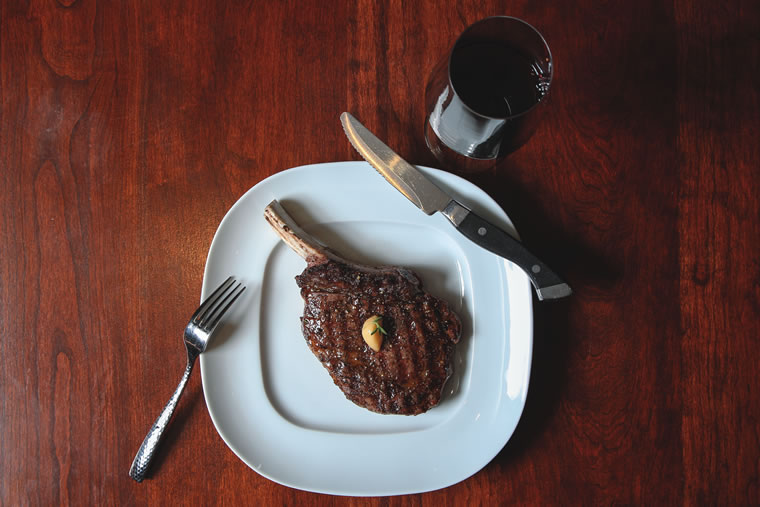
But for many oenophiles, red wines are the perfect matches for red meats, and for good reason. The dryness of many varieties stands in direct opposition to the higher fat content in steaks, and the result is counterbalance.
Courtney Freeman, food and beverage assistant manager at The Ritz-Carlton, Laguna Niguel, says the hotel’s restaurant, enoSteak, serves a rib-eye that calls for big-bodied reds like cabernet, syrah or zinfandel. All three contain elevated amounts of tannin that essentially cut through the high fat content left on your cheeks. But she explains that the pairing also has a reverse effect on the wine, which becomes more smooth.
For leaner cuts of meat, however, Courtney takes it down a notch: EnoSteak’s tenderloin, for example, is better paired with a Burgundian-style pinot noir, a much lighter-bodied red with less tannin. As a general rule of thumb, as red meats get leaner, red wines should get lighter.
But when it comes to specific varietals, Wine Gallery owner Chris Olsen says one of the most underappreciated grapes is grenache, a red type known for its peppery undertones. He pairs it with his restaurant’s oven-roasted chicken, but also notes its smooth translation to home cooking: “A lot of people make their chicken with just salt and pepper,” he says. “Pepper and grenache go really well together.”
Enticing Whites
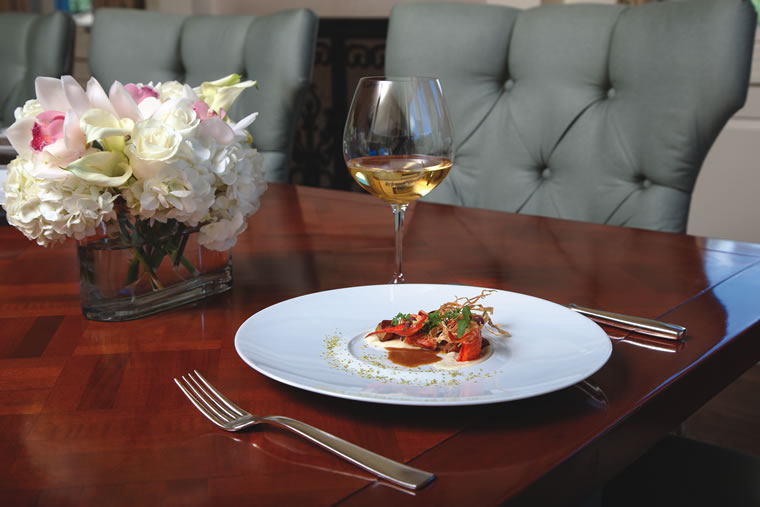
In addition to fruit and tannins, potential pairings can be also determined by sweetness and acidity. While sweetness refers to the level of dryness, acidity denotes the amount of crispness; the two balance each other out. Generally speaking, a wine’s acidity should be equal to or greater than that of the dish.
Raya at The Ritz-Carlton, Laguna Niguel, for example, served up hamachi in aguachile with radish, cucumber, tomato, yuzu and sweetie peppers earlier this fall, which Courtney paired with sauvignon blanc. “Sauvignon blanc is very bright,” she says. “It always pairs great with the dish because the dish has a lot of acid [due to] the yuzu, which is an Asian citrus. When you pair acid with acid, they actually cancel each other out and become a creamy texture.”
Acid can also be used to complement a dish. For example, Montage Laguna Beach beverage manager Troy Smith pairs Studio’s butter-poached lobster with an oaked chardonnay—specifically a classic Meursault. Because it has been aged in oak barrels, the varietal’s acidity is rounded off with a more buttery finish. “It’s that play on roundness and weight with bright acidity,” Troy says of his pairing. “It’s like having the lobster with butter and then a little squeeze of lemon.”
And while flavor and texture offer multiple ways to pair food and wine, complex dishes may perplex aspiring oenophiles at first. In explaining how to choose what aspect of a complicated plate to focus on, The St. Regis Monarch Beach’s Stonehill Tavern sommelier Paul Coker cites a dish diners might recognize from the restaurant’s summer tasting menu, a rotating selection of white fish with tomato-coriander sauce. “As a whole, what are the underlying flavors on this dish?” Paul asks. “You can’t cut a bite off without getting the aroma of coriander on your nose.”
Sparkling Sips
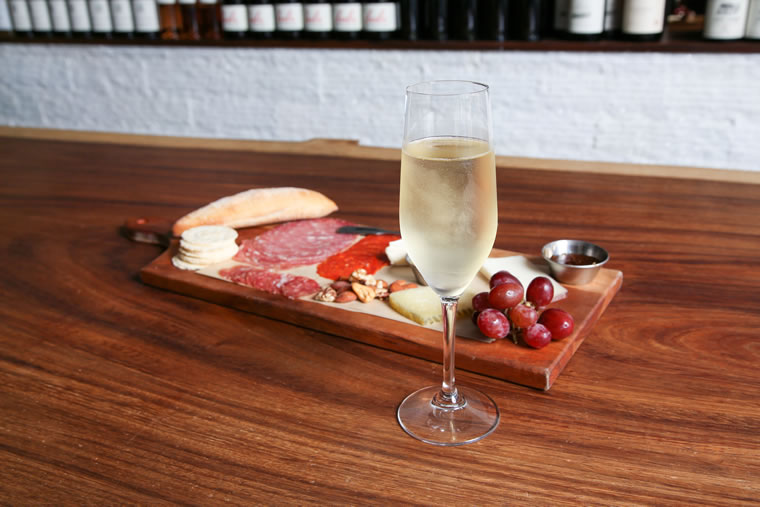
Despite their often-misconstrued reputation, sparkling wines are suitable for much more than just special celebrations—their complexity and acidity make them one of the most versatile types of wine.
Made in Italy, bone-dry prosecco is a match for Wine Gallery’s charcuterie boards, as the bubbles refresh the palate after each bite of rich meat and cheese. A brut style of sparkling wine (with no hint of sweetness) was also Courtney’s choice for enoSteak’s ahi tuna tartare with avocado mousse and lemon oil, on the menu earlier this fall.
“You have the fattiness of the tuna and the oil and avocados, [then] you have that nice, refreshing crisp drink of the sparkling,” she says. “I think it cleanses the palate every time. It leaves you with a really nice fruity flavor in the mouth so that every bite is kind of like tasting it for the first time.”
Courtney also chooses bubbles when pairing with braised meat—specifically, a sparkling rose, which cuts the fat. Produced from red grapes, rose is perhaps the most adaptable varietal due to its low level of tannins and crisp acidity. Its pairing potential is apparent when coupled with Raya’s seafood risotto. “[The rose] is delicate enough that it will pair well with the seafood, but it is also full-body … and that goes really nicely with the Spanish chorizo and the saffron [rice],” Courtney explains. “It rounds it out.”
“If you don’t know what to pair, pair [sparkling wine]. … It’s almost a universal pairing because it doesn’t overpower anything.” –Broadway by Amar Santana sommelier Michael McConnell
For a comparison, sauvignon blanc’s ultra-bright acidity wouldn’t be able to stand up to the masculine Spanish elements of the risotto, while the high alcohol content in big red wines like cabernet or syrah would overpower the delicate seafood. The rose lands right in the middle.
And sparkling wines provide more than just bubbly texture—there’s an entire range of flavor profiles to be explored. Stonehill Tavern’s wine list features both Chartogne-Taillet Champagne, with aromas of freshly risen dough, and Iron Horse brut sparkling wine, highlighted by crispy, green apple notes. The latter is a much better pairing for the restaurant’s ahi tartare with Bosc pear, pine nuts and habanero-infused sesame oil, as the apple in the Iron Horse matches up with the flavor of the pear.
Sparkling wines also range in their levels of carbonation, from the effervescent bubbles of Champagne to the calmer tingle of moscato d’Asti. At Montage Laguna Beach, Troy says moscato d’Asti was a match for Studio’s apricot crisp with gelato, pine nut crumbles and lemon thyme this summer. “The wine tends to be gentle, sweet and floral,” Troy says. “Because you have the gelato, you don’t want something that’s too heavily sparkling, so the softness of that gentle carbonation … works really well. … You also have this peachy floral note that you find in moscato, so it’s about both that stone fruit and floral, soft texture.”
And if all else fails, sparkling wines are dependable enough to serve as a nearly comprehensive option for those just getting started in the art of pairing food and wine.
“If you don’t know what to pair, pair [sparkling wine],” suggests Broadway by Amar Santana sommelier Michael McConnell. “It’s almost a universal pairing because it doesn’t overpower anything.”
—Written by Kristin Lee Jensen
Sip Study
Local businesses offer entertaining educational opportunities for aspiring connoisseurs.
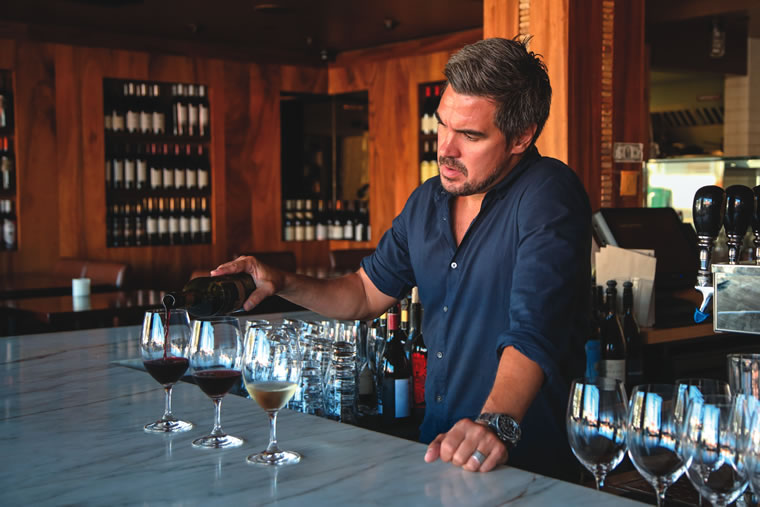
Laguna Canyon Winery
Every first Friday of the month, Laguna Canyon Winery offers a tasting party with 10 1-ounce pours per person. Reservations are required for the Nov. 6 event; tickets are $40. The winery also hosts a wine club that grants access to other special gatherings such as learning to make a custom blend. Membership is $40 per month. (949-715-9463; lagunacanyonwinery.com)
Zéytoon Cafe
Several times a year, Zéytoon Cafe hosts a wine lecture and tasting with master sommelier Peter Neptune, one of 147 people in North America to hold the wine industry’s most prestigious title. Each seminar explores a specific topic, such as Bordeaux varietals. The next event is set for Nov. 13 and features a concentration on Spanish and Portuguese wines. (949-715-9230; zeytooncafe.com)
Wine Gallery
Wine Gallery offers half-glass options to expose diners to different varietals, or guests can create their own flight to dive into the oenophile experience. Owner Chris Olsen plans to implement weekly wine flight tastings—like those he currently hosts at his Corona del Mar location—in Laguna soon. (949-715-8744; winegallerylaguna.com)
Argaux
Laguna locals Arden Montgomery and Margaux Reaume offer sommelier-guided tastings, dinners and catering for private events in homes, event spaces and restaurants through their recently launched company, Argaux. The pair is hosting a Nov. 11 soiree at Starfish with wine pairings, live music and a silent wine auction; tickets are $50. (argaux.com)




